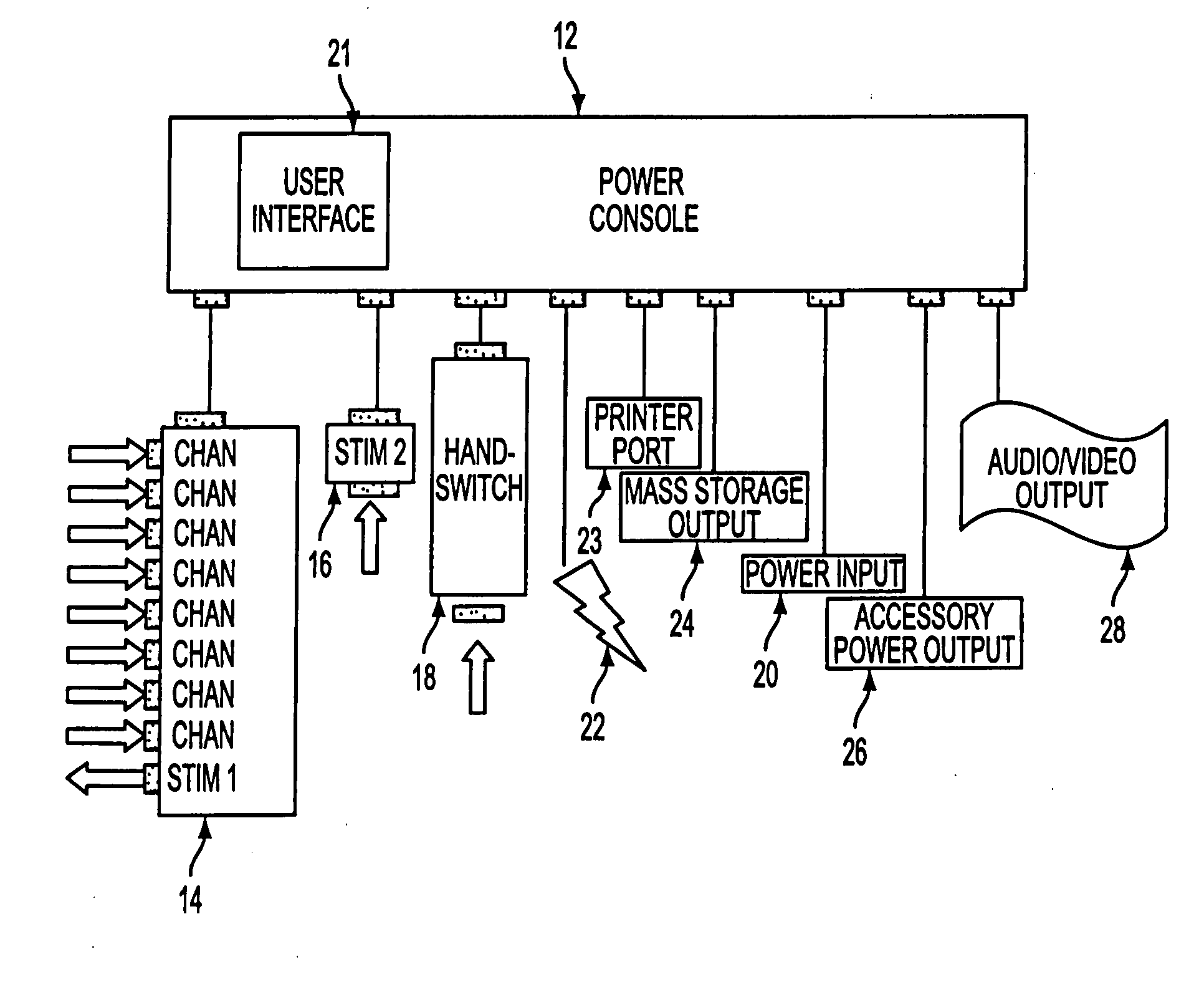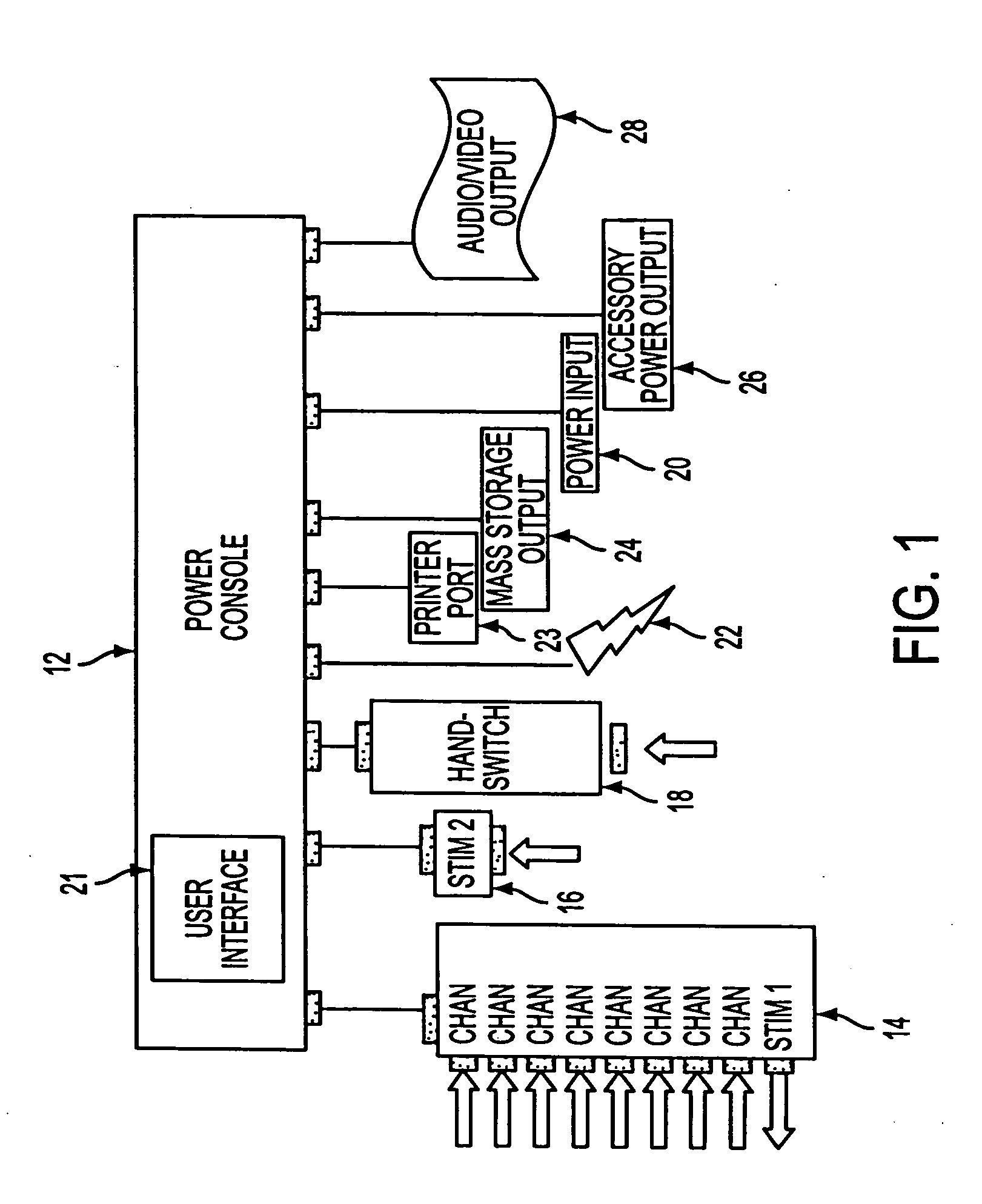Apparatus and method for intraoperative neural monitoring
a neural monitoring and apparatus technology, applied in the field of intraoperative neural monitoring, can solve the problems of not providing an early indication of spinal cord dysfunction, unable to identify more subtle spinal cord impairments, and limited wake-up testing to evaluate gross motor function, so as to increase the safety and efficiency of surgical procedures, and reduce the duration and complexity of surgical procedures.
- Summary
- Abstract
- Description
- Claims
- Application Information
AI Technical Summary
Benefits of technology
Problems solved by technology
Method used
Image
Examples
Embodiment Construction
[0069] An intraoperative neural monitoring system 10 according to the present invention is depicted in FIG. 1 and comprises a power console 12, a patient interface unit 14 for being electrically connected with the power console to deliver Stim I electrical stimulation, a stimulator 16 for being electrically connected with the power console to deliver Stim 2 electrical stimulation, a hand switch 18 for controlling activation of Stim 2 electrical stimulation, and a power input 20 for supplying electric power to the power console from a suitable power source. The power console 12 includes a user interface 21 providing multilingual (voice and text) interaction with a user, and preferably the power console includes one or more connectors for connection with one or more muting detectors 22. The power console 12 may include a printer port 23, a mass storage output 24, an accessory power output 26 and / or an audio / video output 28 as explained further below.
[0070] The power console 12 is sho...
PUM
 Login to View More
Login to View More Abstract
Description
Claims
Application Information
 Login to View More
Login to View More - R&D
- Intellectual Property
- Life Sciences
- Materials
- Tech Scout
- Unparalleled Data Quality
- Higher Quality Content
- 60% Fewer Hallucinations
Browse by: Latest US Patents, China's latest patents, Technical Efficacy Thesaurus, Application Domain, Technology Topic, Popular Technical Reports.
© 2025 PatSnap. All rights reserved.Legal|Privacy policy|Modern Slavery Act Transparency Statement|Sitemap|About US| Contact US: help@patsnap.com



